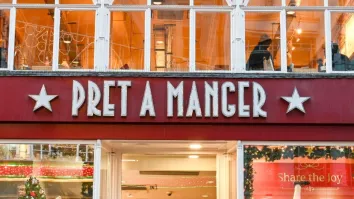
Marketing strategies to attract the millennial market: QSR Automations
UK millennials now account for an annual £27 billion of restaurant spend: 30% of the total market.
What’s more, this is a group that is well used to the smartphone as a source of information, something that marks them out from previous generations. Given the size of this audience, their substantial spending power and their penchant for wearable devices, it’s clearly vital to position restaurant marketing carefully and to use the right channels to take the brand advantage amongst this profitable group. Here are six top strategies from Lee Leet, CEO & Founder, QSR Automations, to keep in mind:
1. Get social
Close to 60% of millennials have said that social media influences their purchases. Indeed, Campaign found that, so far, there are already over 380 million posts under #foodporn and #food, with platforms such as Instagram used not only for sharing but also finding venues in this era of brand promiscuity in the restaurant sector. So social media presence is vital. Operators should take time to build a campaign that shows off their restaurant by running competitions, sharing high-quality photos of menu items and other engaging activity. It’s also important to respond to reviews and comments. Instagram, Facebook and Twitter tend to be the best social media platforms for restaurants. Those new to this as a marketing channel could start with just one, master it, then add another.
2. Keep in touch
Email campaigns are a great way to generate business and develop customer loyalty. However, there are several best practice tips to bear in mind. Content needs to be personal – millennials will not take kindly to a generic email blast. Operators should therefore take some time to segment lists of email addresses by customer type – new, repeat, etc – and consider experimenting with several email templates to establish which style is achieving the most engagement. Making formatting less predictable will also help avoid email-fatigue.
Research by Adobe found 88% of millennials read their email on a smartphone, highlighting how important it is for emails to be mobile-friendly. A mobile-responsive email template will ensure all content displays properly, improving the experience and preventing users switching off.
Guest management systems that integrate with a loyalty programme can be used to gather email addresses. The loyalty programme can also collect other valuable information, including a customer’s allergies, their birthday and anniversaries.
For a variety of mobile-responsive email templates and access to email performance analytics, operators can use email marketing software tailored for this. The programmes can cost as little as a month £7 month and some are even free.
3. Invest in technology
Millennials will avoid restaurants with long waits and inconsistent food quality at all costs. Technology solves these problems, though. Here are a few of the most popular systems operators should consider:
Guest management system
Investing in a guest management system that allows millennials to check wait times and make a reservation via a companion consumer app makes restaurants much more desirable. Apps give restaurants access to a consumer network they would not otherwise be connected with. To keep improving customer service, operators also need a solution that gathers guest analytics to help track trends and guide business decisions.
Kitchen automation tool
A kitchen automation system will help reduce ticket times and create a more efficient kitchen. Reduced ticket times improve the guest experience and maintain food quality. A good kitchen display system will also provide metrics about ticket times, staff efficiencies and more.
Guest Wi-Fi
Guest Wi-Fi is a great way to attract large groups, particularly during work hours. Millennials are constantly on their phones so they’ll want to visit venues that don’t require them to use their data allowance to get online. If an operator has been struggling with lunch sales, for example, this could be a way to address that.
Self-service kiosks
Several UK operators have introduced self-service kiosks, including McDonald’s and the fresh-food quick service brand Tossed, which went so far as to open the country’s first entirely cashless restaurant two years ago. The operator has since opened more, citing the improvement to the customer experience as they can browse the menu, customise dishes and order at leisure, increased purchase accuracy and, simultaneously, the fact that valuable staff time is regained to fulfil the brand’s promise that ingredients are always fresh and dishes are made to order. For McDonald’s, the move to self-service has considerably improved the guest experience too, releasing staff from back-of-house and counter duties to provide value-added services to customers at-table.
4. Make it convenient
Millennials demand convenience. With the growing popularity of food delivery apps, it’s hard to avoid take-away so off-premise dining should be top-of-mind for restaurants pushing to build and maintain their market share.
Before leaping in, operators must draw up an off-premise dining plan. Which menu items can sites realistically offer? Probably the quickest and easiest to prepare. How should deliveries be packed? Hot and cold items can’t travel together so separate packaging will be required. Operators also need to consider the two streams of traffic that restaurants will have to manage – dine-in and dine-out. Ideally, restaurant technology that manages this will be in place and provide real-time order tracking. Most importantly, there is a vital decision to make about whether to use a restaurant delivery partner, such as Just Eat and Deliveroo, or manage orders in-house. Delivery partners do charge a commission but they also provide a network of consumers actively seeking food for delivery.
5. Be transparent
Millennials want to know where their food is coming from and operators should be transparent about food provenance. In an ideal world, all ingredients would be organically grown by a local producer, and millennials are apparently twice as likely to care about organic origins as non-millennials. But that’s not always realistic and the path to a completely clean menu can be a long one. That said, millennials will be more loyal to restaurants that are truthful about the source of their ingredients.
Transparency should also include social responsibility. Millennials love brands that give back and care about the environment. Forbes reported that 75% of millennials have a very high opinion of companies with a strong philanthropic spirit.
6. Offer an experience
Restaurants are more than just a place to eat for millennials, who are all about the experience. A restaurant should tell a story. What inspired the concept to launch? What does the brand stand for? Operators should look to tell their story and tie it into the brand.























